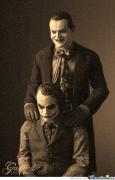Absolutely.
But people probably will because of the reward effect.You don’t break it out indiscriminately.
Everyone right now that's been practicing drawing a small revolver from their pocket has absolutely patted themselves on the back at how prepared they are because they can shoot a USPSA target in the face with their hand staged on the gun in less than a second. Since Darryl did that video there have been at least ten dudes I've seen mimicking the trick on video. Because it looks and feels good.
I've yet to see anyone at the very least trying same said trick on a role player in opposed experiential training under a verbal task load in some rough semblance of a robbery context. It's absolutely doable. I've pulled a Seeamp LWS 32 out of a pocket holster and held it under a downward angled clipboard right in front of a guy suspected of shooting up a house that I was questioning as a uniformed officer. Talked to him for a good 15 minutes with a gun in my hand that he never saw. I did that because he was sitting on a porch in a shitty wicker love-seat thing and kept eyeballing a clothes hamper to his right. He actually shifted TO his right a bit and then to the edge of the love-seat. I didn't feel I was quite at a wing-span search yet so I pivoted a bit to my right, drew the Seecamp out of the back pocket holster it was riding in with my right hand, and used the clipboard in my left as a visual barrier to mask the draw. I've also done the same thing in demonstration in LE classes with magazines and newspapers.
So...is that skill or tactics?
Is artifice a skill or tactic?
Is guile a skill or a tactic?
Is deception a skill or a tactic?
Because these two sentences.....
Are fairly worthless sound-bytes absent context.Skill without tactics is worthless.
Tactics without skill is worthless.
Yes. I think a sub second draw from a pocket on a dude charging with a knife 7 yards away is absolutely a thing.0.8 second pocket draw might be something to utilize if someone is charging at you from 7 yards and actively brandishing a knife (perhaps? I’m not a self defense expert)




 Reply With Quote
Reply With Quote

